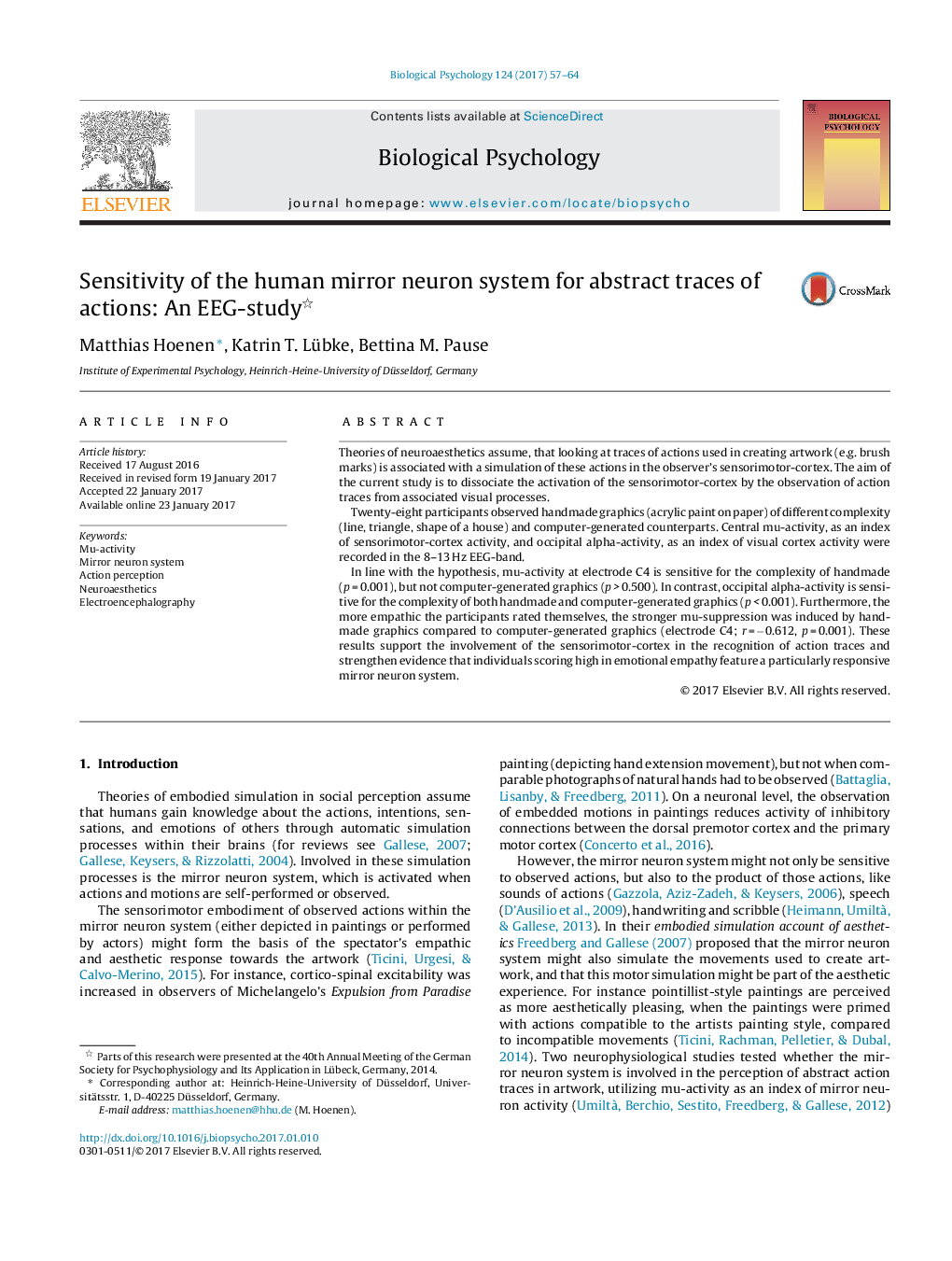| Article ID | Journal | Published Year | Pages | File Type |
|---|---|---|---|---|
| 5040459 | Biological Psychology | 2017 | 8 Pages |
â¢Results support involvement of the MNS in action trace recognition.â¢Response of the MNS to action traces is dissociable from effects of visual complexity.â¢Individuals scoring high in emotional empathy feature a particularly responsive MNS.
Theories of neuroaesthetics assume, that looking at traces of actions used in creating artwork (e.g. brush marks) is associated with a simulation of these actions in the observer's sensorimotor-cortex. The aim of the current study is to dissociate the activation of the sensorimotor-cortex by the observation of action traces from associated visual processes.Twenty-eight participants observed handmade graphics (acrylic paint on paper) of different complexity (line, triangle, shape of a house) and computer-generated counterparts. Central mu-activity, as an index of sensorimotor-cortex activity, and occipital alpha-activity, as an index of visual cortex activity were recorded in the 8-13 Hz EEG-band.In line with the hypothesis, mu-activity at electrode C4 is sensitive for the complexity of handmade (p = 0.001), but not computer-generated graphics (p > 0.500). In contrast, occipital alpha-activity is sensitive for the complexity of both handmade and computer-generated graphics (p < 0.001). Furthermore, the more empathic the participants rated themselves, the stronger mu-suppression was induced by handmade graphics compared to computer-generated graphics (electrode C4; r = â0.612, p = 0.001). These results support the involvement of the sensorimotor-cortex in the recognition of action traces and strengthen evidence that individuals scoring high in emotional empathy feature a particularly responsive mirror neuron system.
